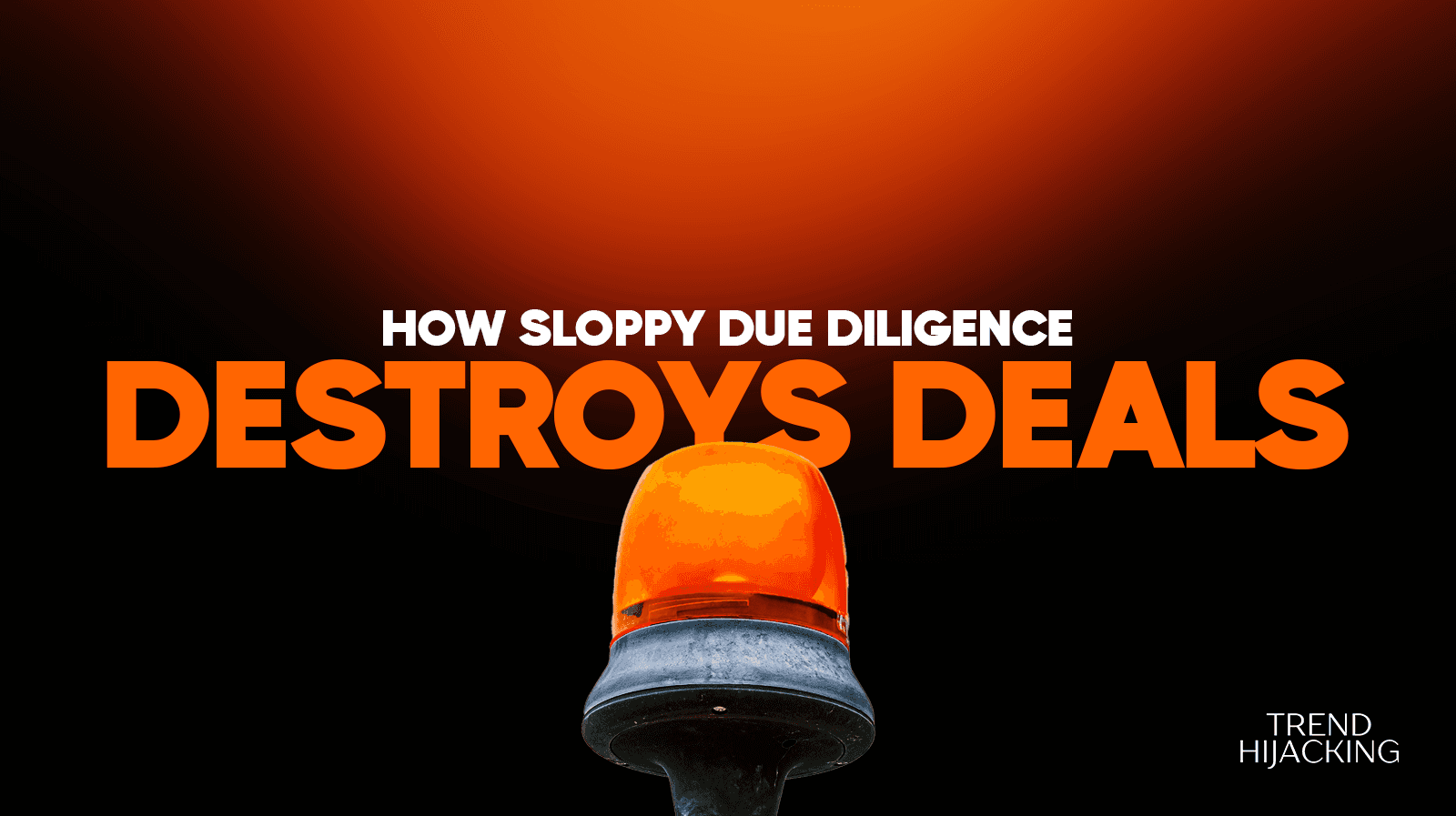
4 Proven Ways To Get Better Results for Your Ad Spend
#1: Optimize Your Ads Campaigns REGULARLY
This should be basic knowledge, shouldn’t it?
Yet many brands and store owners are inconsistent with how optimal their campaigns are.
It’s important to regularly review and optimize your ad campaigns to remove underperforming ones and promote those that perform.
Not only does this help reduce how much you spend on ads, but it also ensures you are not spending way more than you are converting.
Here are some tips for keeping your ad campaigns as clean, optimal, and most importantly, profitable as possible:
Optimize Your Creatives: it’s important to optimize your campaigns regularly based on user interactions.
You can optimize your creatives by making sure they start with a good hook.
Also, try different angles and offers with your creatives to see what performs the best.
You could A/B test your creatives based on different hooks, angles, and offers to see which is the best performing.
Adjust Your Targeting: it’s important to ensure your campaigns target the right audience.
You don’t want your ad about running shoes showing up among nursing mothers.
It’s also important to note that extending your reach is helpful to your store growth and you can do that by being on as many platforms as possible.
Refine Your Ads Copy: this can’t be over-emphasized! Every good ad consists of good copy.
Check your ads for ineffective hooks, unclear CTAs, non-persuasive product pitches, and other components of your ad copy that could be improved.
You can do this by putting yourself in the place of your avatar and seeing whether or not you will want to buy after watching your ad.
If you find inconsistencies, you can hire an Ad copywriter to rewrite the script and test it again.
Remove Under-performing Keywords: if you run Google Ads, you’ll know how important keywords are.
You need to constantly check and update your existing keywords and remove those that aren’t performing.
Later we will look more into Keywords.
Optimizing your Ad campaigns is essential if you want to increase your ROAS while cutting down on your ad spend.
It is, at times, better to control when and where your ads get seen. That is where Ads Scheduling and Geo-targeting come in, and we will look at that next.
We Help You Buy / Build, Manage and Scale E-commerce Brands for an EXIT
E-commerce Simplified for Busy Individuals – We handle the buying, building, and scaling, so you can focus on what matters.
Growth-Focused Strategies – From sourcing to marketing, we drive growth and prepare you for a profitable exit.
Expertly Managed Exits – We build a high-value brand designed for a Lucrative exit.
#2: Leverage Ads Scheduling and Geo-targeting
Ads Scheduling, or dayparting, involves specifying the times your ads get seen by your target audience.
It helps in controlling your ads as well as cutting down on your Ad spend and maximizing the effectiveness of your ad.
The reasons this is used by advertisers are:
To maximize visibility during Peak Hours: if your store experiences higher conversion rates or customer engagement at certain hours of the day, you can schedule your ads to appear at those times of day.
Not only does this help you reduce how much you spend, but also helps you maximize the impact of your advertising efforts.
Conversely, you will want to reduce your ad spend during low-performing hours. You could either reduce or completely remove your ad spend during those periods.
Consider Your Audience’s Timezone: you also want to consider the timezones of your audience, provided they are in different geographical locations.
Fortunately, this allows for adjustments based on your audience’s geographical location and ensures your ads are displayed appropriately.
Geo-targeting, on the other hand, involves strategically delivering ads to your target audience based on their geographical location.
This is mostly important for local businesses that are looking for conversions in their specific location.
Not only does this help you reduce your ad spend, but also ensures the ads are relevant to your audience.
You can customize your ads by being as niched down as possible to their actual wants and pains.
Also, geo-targeting makes it easier to bid your ad in the right place based on location as well as optimize your search keywords, so that when someone searches for your product/service and adds a specific location to it, your ad pops up.
An example is when people search for Tracksuits.
“Tracksuits” is a highly competitive keyword, but optimizing your ad for a long-tail keyword like “Tracksuits in Arizona” or “Arizona Tracksuits” can be more useful to you as the competition is less.
With ad scheduling and geo-targeting, you can create customized and localized ad campaigns, ensuring that your ads are shown to the right audience at the right times and in the right locations.
This level of precision can lead to improved engagement, higher conversion rates, and a more efficient use of your advertising budget.
We talked about keywords earlier where we said you have to remove underperforming keywords. The example I cited not so long ago is an example of what I was talking about.
In the next section, we’ll talk about focusing your targeting only on high-performing keywords.
#3: Focus On High Performing Demographics and Keywords
Another thing to consider when trying to get better results for your ad spend is actual demographic data.
You need to create an ideal customer avatar for your product or service — this can NOT be overemphasized or overlooked.
If you sell, for instance, Protein Powder, your ideal customer avatar could be a man named Jones, a fitness enthusiast, in the age range of 25–30.
You should create a visual imperative of how your customer looks and likely behaves.
This increases the likelihood of creating a relatable ad.
With this data, you can go on to make highly targeted ad campaigns as well and reduce how much you would’ve spent when it was less focused.
In case you run Google Ads, you don’t want to focus solely on how your customer likely looks, you also need to know what they’re searching for(based on their need for your product).
We call these search queries “Keywords”.
Using high-performing keywords as the foundation of your ad is very necessary. By identifying and using keywords that generate the best results, you can optimize your advertising campaigns, as well as increase visibility and traffic.
Here is why focusing on well-performing keywords is important:
High-performing keywords constantly generate results and thus give the potential to maximize your ROI.
They are usually the most relevant keywords to your audience, and your ad should strive for relevance.
They are usually cost-efficient — stores can use them to reduce how much they spend on ads.
These are some of the many reasons why using good keywords is important, mostly if you run Google Ads.
Here are some strategies to ensure your keywords perform as well as possible.
Keyword Research: you must conduct keyword research to identify terms that are not only relevant to your brand but also have a strong performance indicator.
You should be on the lookout for words that have pretty low competition and a considerable search volume.
You can get all these analytics by using keyword research tools like Ahrefs and Google’s Keyword Planner.
Regular Performance Analysis: Monitor the performance of your keywords regularly.
Get those that consistently drive traffic and conversions. Leverage analytics tools to assess metrics such as click-through rates, conversion rates, and engagement.
This will help you find what keywords perform well and those that do not so you can get rid of them.
Use Long-Tail Keywords: use long-tail keywords as they usually have a higher search volume to competition ratio.
That means that more people search for these keywords than you have people competing with you to rank for the keyword
Plus, the quality of the traffic that comes in through these keywords is usually of higher quality(meaning they are more likely to convert) than those from short-tail keywords.
Test and Optimize Your Ad Copy: Experiment with different ad copy variations for your high-performing keywords.
A/B testing can help you identify the message that resonates best with your audience and enhances overall performance.
By strategically focusing on high-performing keywords and adapting your strategy based on performance data, you can refine your efforts for maximum returns.
Regular analysis and adjustments will ensure that your campaigns remain effective and aligned with the ever-changing search behavior of customers.
Talking about ads, when testing them, it is important to also spread your tentacles and place ads where conversions are possible.
In the next section, we’ll look at how you can use alternative platforms to test and run your ads.
#4: Explore Alternative Advertising Channels
As a store/brand owner, the purpose of this is to increase your reach. This helps if you are looking to spread across and reach potential customers who aren’t on your traditional platform.
Some Advertising Channels you can consider exploring are:
Snapchat:
People often forget about Snapchat when discussing advertising.
Are Snapchat ads even worth it anymore? I mean, with Instagram and Facebook doing the Stories and Reels thing and TikTok taking over, isn’t Snapchat a bit old-fashioned?
Guess what? Snapchat is thriving, especially for brands. Believe it or not, Snapchat usage has been on the rise every year.
Just between 2020 and 2022, there’s been a whopping 52% increase in daily active users.
And it’s not just about the numbers. Check this out:
Snapchat is the go-to social network for 15–25-year-olds, with 48% of them using it daily. For 35%, it’s their top hangout.
It boasts a massive 557 million monthly active users, making it ahead of both Pinterest and Twitter.
When it comes to advertising, Snapchat reaches a whopping 75% of all Millennials and Gen Z’ers.
Here’s more info about Snapchat ads:
Pinterest:
Guess what’s pretty cool about Pinterest? Users there are throwing down twice as much on shopping every month compared to those who aren’t into the whole pinning scene. Cha-ching!
Pinterest stands out from the crowd because its users are, for the most part, looking to discover new products, and they love a good ad.
Now, Pinterest hooks you up with a mix of free and paid advertising tools. And here’s the real magic — combining both can bag you 3 times more conversions and double the ROI on your ad spend, way better than just relying on paid ads alone.
And as if that’s not sweet enough, Pinterest boasts one of the lowest CPCs (Cost Per Click) in the whole social media advertising game.
Instagram:
This should be a rather obvious one as it’s one of the most popular platforms not only for social connections but also for businesses to make good revenue in real-time.
Since you likely know and have heard of Instagram ads, I’ll just mention something you likely don’t know about running ads on it.
One thing most people don’t know is that Instagram Ads reach 96.6% of Instagram’s active user base every month.
That’s a total of almost 2 billion potential customers! And the target group is still growing.
Here’s a quick video to show you Instagram Advertising at its finest:
TikTok:
Just like Instagram, TikTok is another social platform that has taken the advertising world by storm.
The platform has about 1 billion monthly users and isn’t declining any time soon.
Since its peak in 2020 — it’s now the go-to advertising platform for many brands. As the user count skyrocketed, so did the number of ads they’re checking out, going from 19% in 2020 to a whopping 37% in 2021.
A 2021 Kantar report even crowned TikTok as the king of ad equity, beating out giants like Amazon, Instagram, Google, and Twitter. And they didn’t just luck into it; they held that top spot the year before too.
Consumers are loving TikTok for its authenticity and community vibes. According to a 2020 Nielsen study, a whopping 59% of TikTok users globally feel like they’re part of a cool community when they’re scrolling through the app.
It’s not just about community, though — TikTok is a goldmine for discovery. A cool 55% of users say TikTok is their secret weapon for finding new and exciting stuff.
X(formerly Twitter) Ads
Twitter Ads have been around for a while and for good reasons of course.
For one, they can reach a potential audience of 486 million users.
You can learn more about Twitter Ads here.
Google:
Google Ads have been around for a relatively long time and businesses have been cashing big on it.
They are the largest digital ad publisher in the United States, accounting for 28.4% of all ad revenue.
It’s an advertising platform that I personally resonate with a lot as we use it majorly when scaling stores to 6 and 7-figures,
We use it alongside a strategy called Trend Hijacking which generates loads of revenue for us and our clients.
So trust me when I say that Google Ads is a goldmine and is something you should consider trying out.
Here are some other benefits of exploring alternatives:
Exploring alternative channels allows you to tap into audiences not active on your traditional platform. This broadens your reach and exposes your brand to different segments of your target market.
Some channels might have lower competition compared to others. This can result in reduced ad spend and increased visibility for your brand.
They may cater to specific niches or interests. By aligning your brand with these audiences, you can establish a more targeted and engaged customer base.
These are just a few to mention so you see the potential in this strategy.
When looking to diversify, you need to consider some factors, which we’ll look at now:
Audience Relevance: ensure that the alternative channel aligns with your target audience. Consider demographics, interests, and behaviors to determine if your ideal customers are active on the platform.
Metrics and Analytics: Understanding the performance of your ads on alternative channels is crucial for optimizing campaigns and measuring success.
Brand Alignment and Image: ensure that the alternative channel aligns with your brand values and image. Consistency across all channels helps maintain a cohesive brand identity.
User Experience: consider the user experience on the alternative channel. A positive and user-friendly environment aids your efforts.
Test ads: begin with a small-scale test to scope the performance of your ads on the alternative channel. Analyze the results and iterate your strategy based on what works best for your brand.
All these, among some other legal compliance measures, should be considered if you choose to transition or add another platform to your ads system.
Conclusion
Reducing ad spend while maximizing ROI is something every brand looking to scale and grow should consider.
The strategies outlined — optimizing ad campaigns regularly, leveraging ad scheduling and geo-targeting, focusing on high-performing keywords & demographics, and exploring alternative advertising channels — provide the roadmap to reaching that goal.
By regularly refining and optimizing ad campaigns, using high-performing keywords, and exploring different advertising channels, your brand can ensure that its advertising efforts remain not only cost-effective but also very efficient.
As you go on to optimize your advertising strategies, my team is here to guide you every step of the way.
If you’re ready to take your store to multiple figures in revenue, book a call with us today. Let’s work together to create/scale your store while maintaining a good ROI. Click here to schedule a call and unlock the potential for growth in your business.
Before You Go, Let’s Keep in Touch⏬
We Help You Buy / Build, Manage and Scale E-commerce Brands for an EXIT
E-commerce Simplified for Busy Individuals – We handle the buying, building, and scaling, so you can focus on what matters.
Growth-Focused Strategies – From sourcing to marketing, we drive growth and prepare you for a profitable exit.
Expertly Managed Exits – We build a high-value brand designed for a Lucrative exit.
A Done-For-You E-commerce Business
Discover how we Build, Launch, and Scale a 6-figure/month Business for You
Learn more
The 6-Step Blueprint to E-Commerce Acquisition
See how we Acquire, Convert, and Scale with Real Case Studies to Prove It.























